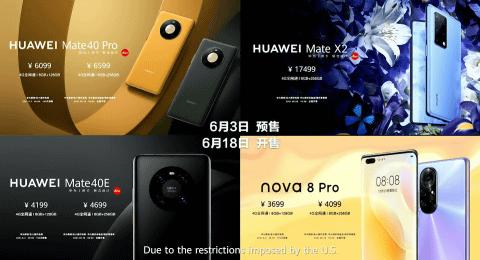Huawei's original "Harmony OS 2" of...
08
04
Huawei's original "Harmony OS 2" officially compatible with smartphones, delivered to existing models
What is HarmonyOS 2?
Huawei was in an environment where various US products could not be used due to sanctions by the US government. In August 2019, "HarmonyOS" was announced as an original OS, and initially appeared as a platform suitable for IoT devices, but from that stage it was also considering expanding to smartphones.
And in September 2020, a developer version of HarmonyOS 2 was released at the developer conference, and plans to install it on smartphones in 2021 were announced. This time, HarmonyOS is finally officially used on smartphones.
One of the major features that HarmonyOS sings is that it operates as a "common software platform" not only for smartphones, but also for wearable devices such as smart watches and wireless earphones, tablets, monitors, and products with different specifications, uses, and shapes. That's the point.
By utilizing components and supporting all devices with a single system, it will be possible to seamlessly use various apps such as calls and cameras across the boundaries of devices.

For example, if you get into a car while talking on a smartphone, you can switch to an in-vehicle device and continue talking. In the same way, you can experience video conferences by switching from smartphones to PCs and continuing.
Alternatively, while playing a mobile game app, simply swipe up from your smartphone to switch to a tablet and continue playing games on a large screen.
It is said that smart home appliances can also be connected to smartphones with a single tap, for example, how to use such as holding the smartphone over the oven and selecting a recipe, and soymilk that fits the body with a soymilk machine based on the data of the health care application. You can also make.
When reading news, if you want to transfer an article you are interested in to a friend, a mechanism called a service widget allows the recipient to tap and read the article sent without installing the app.
It is said that such an experience was realized by introducing "soft clock synchronization" that synchronizes all devices with the same standard as a technology to synchronize video and audio, and technology to suppress interference, lag, and packet loss. A decentralized application framework and atomic services are combined so that multiple devices can function as one device.
Also, in graphic rendering such as games, AI control and rendering are processed in cooperation with the CPU, not just the GPU. At the same time, the rendering logic and the service processing logic are separated so that one logic does not interfere with the operation of the other logic, the graphic is expressed more smoothly, and the frame rate is also improved. By not performing repeated rendering, the load of video processing is reduced, and the operation feels light to the user. When the specs were introduced, there was a scene that appealed that playing a graphic-heavy game on the iPhone would run out of battery in 3.9 hours, while Huawei's HarmonyOS 2 smartphone would last 5.1 hours.
Inheriting the EMUI used in Huawei smartphones, it provides security and privacy protection functions, and operates lighter than the previous generation EMUI. Taking advantage of the feature of transcending the boundaries of devices, it is possible to realize a mechanism such as unlocking a smartphone by cooperative authentication that combines smart watches and face recognition with a smartphone.
HarmonyOS 2 announced this time is positioned as the first commercial distribution of the open source project "Open Harmony". Huawei explained that creating an environment as open source will lead to a successful opportunity for the HarmonyOS ecosystem. A policy was announced to welcome more partners.








